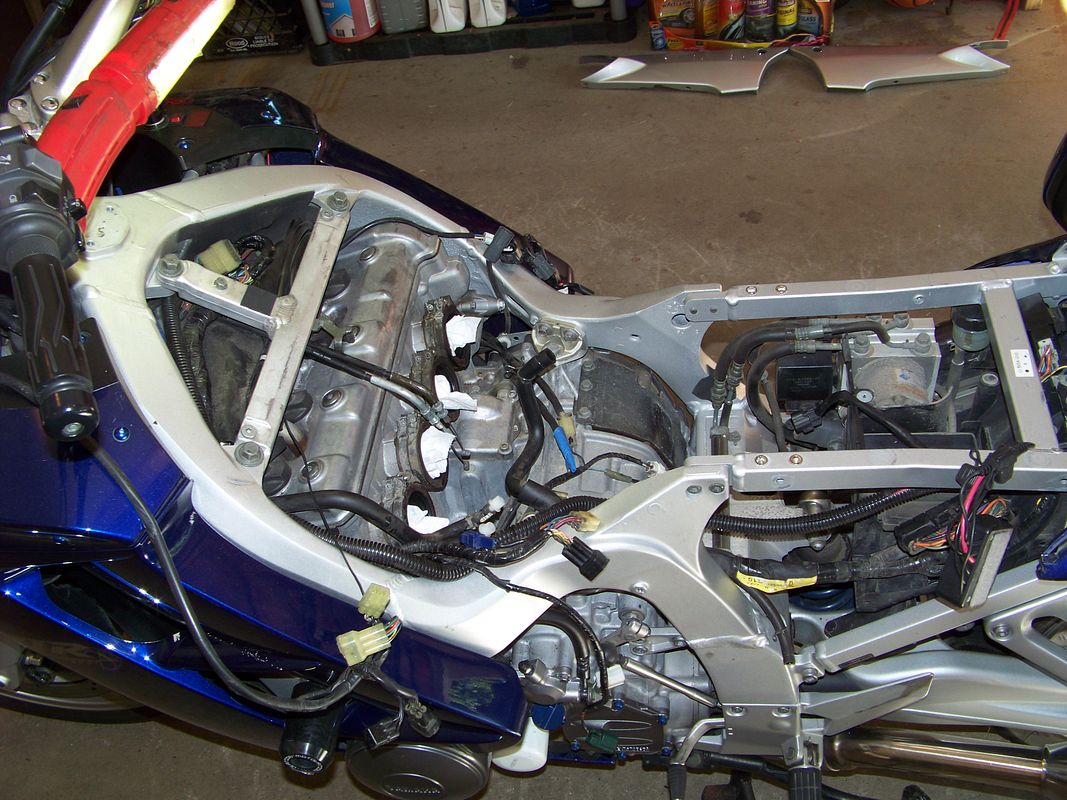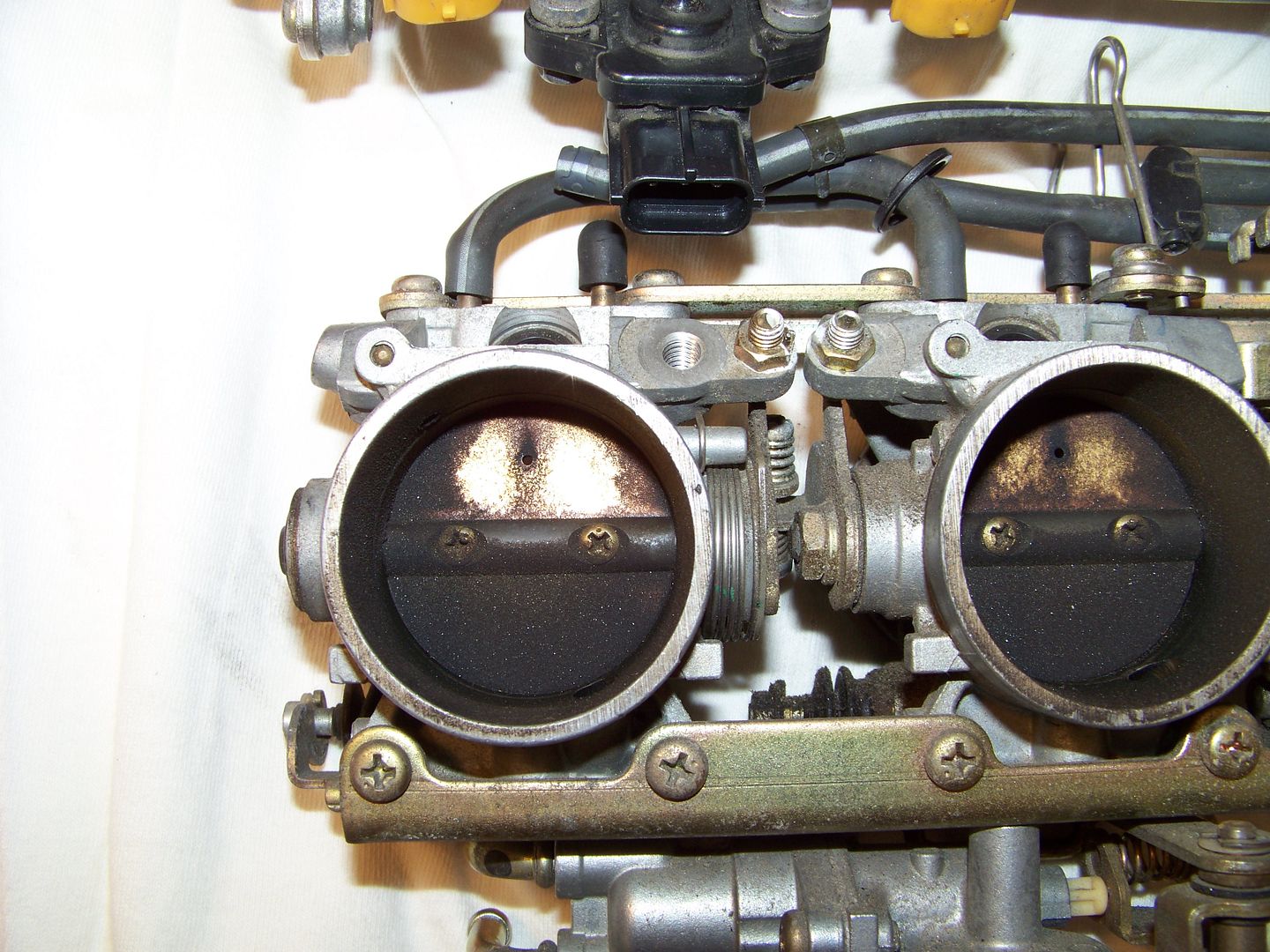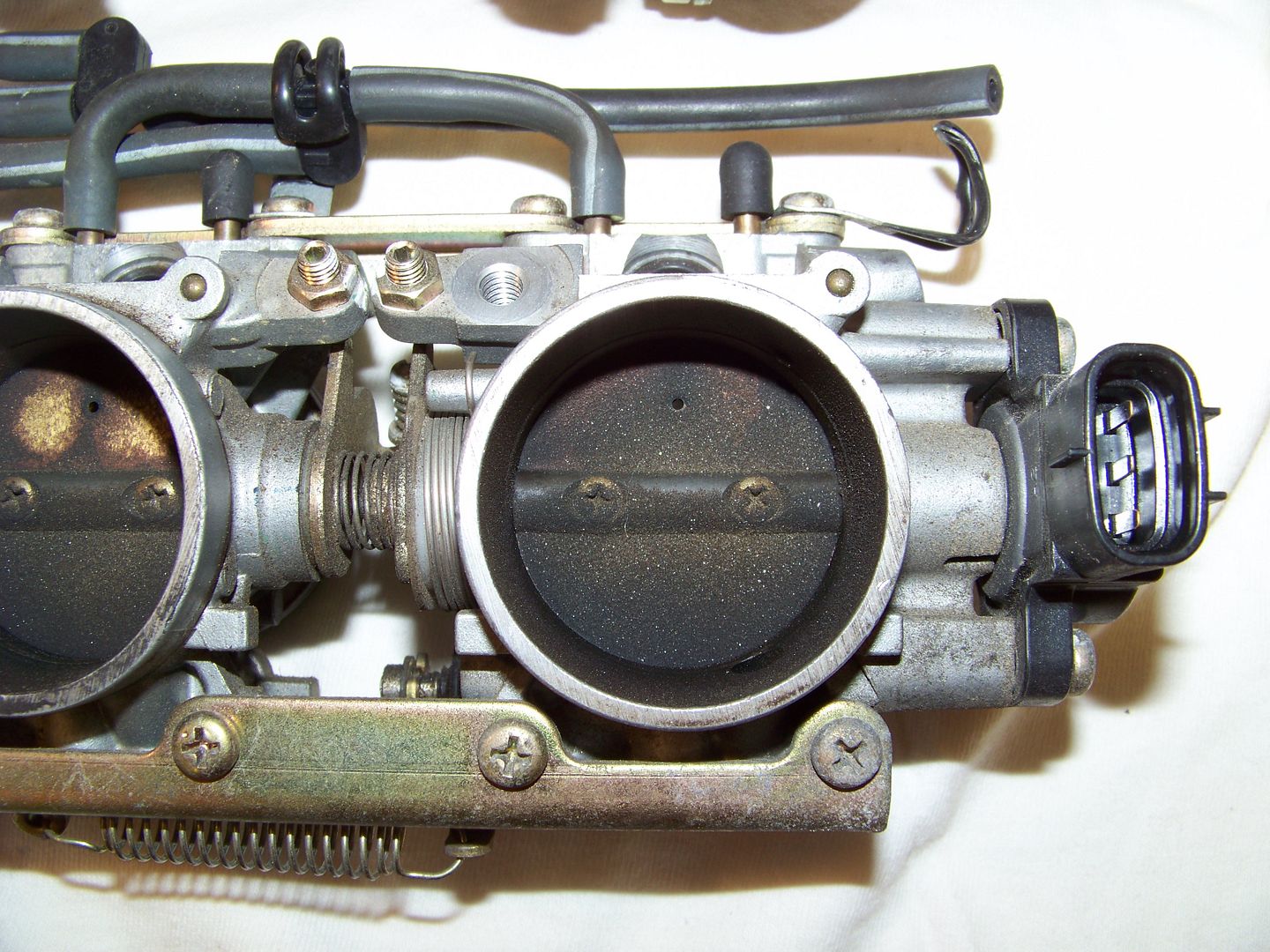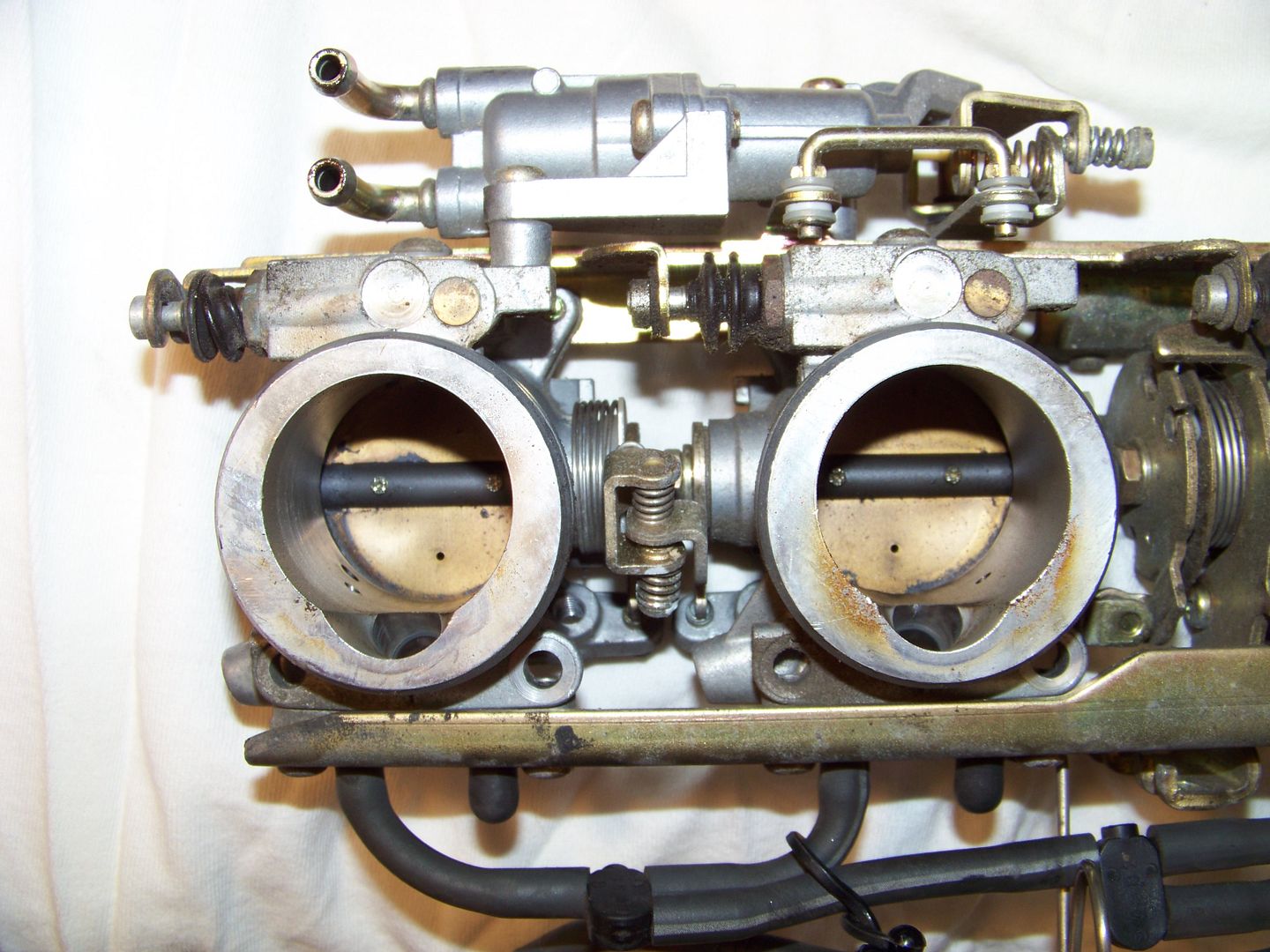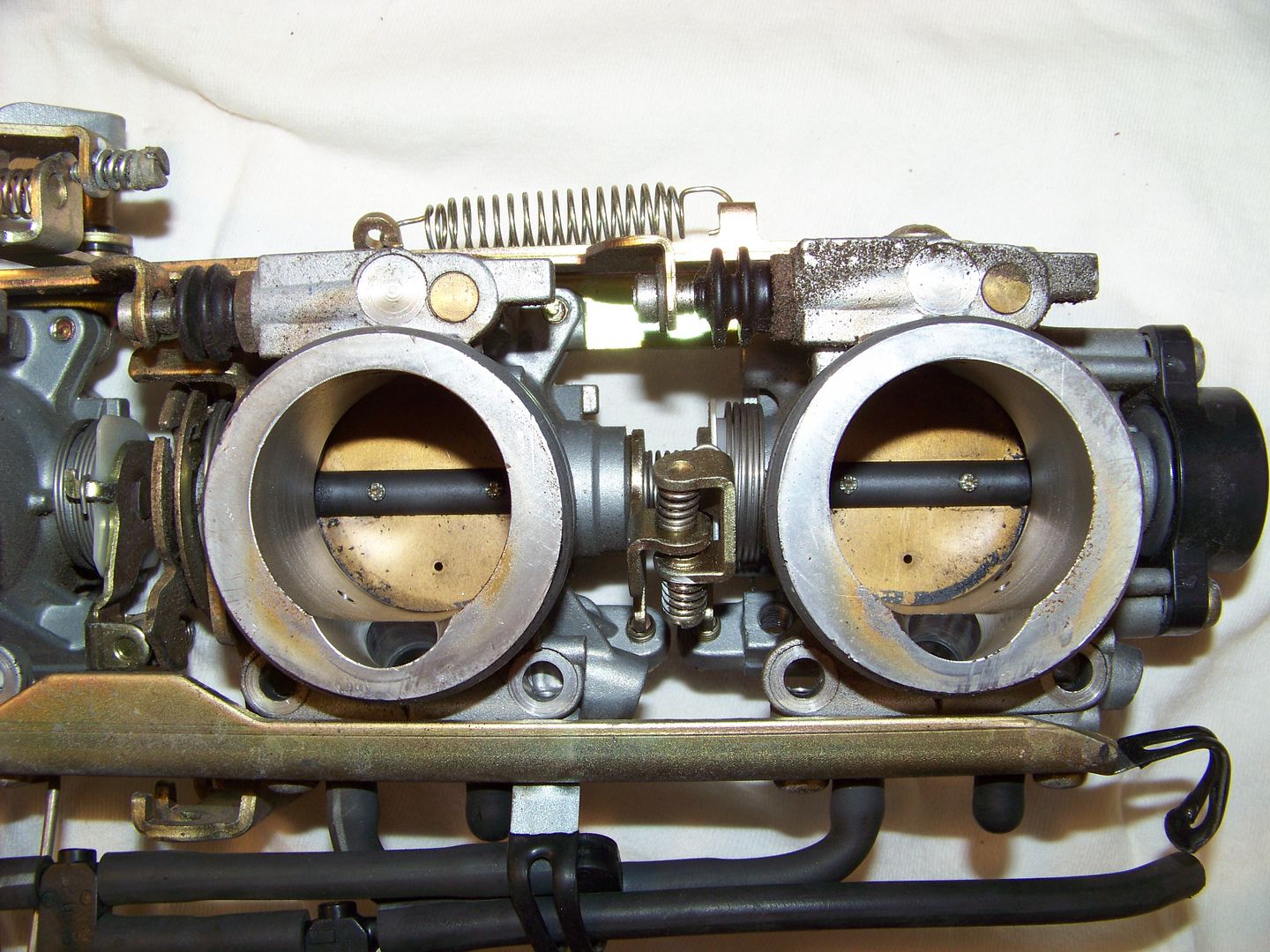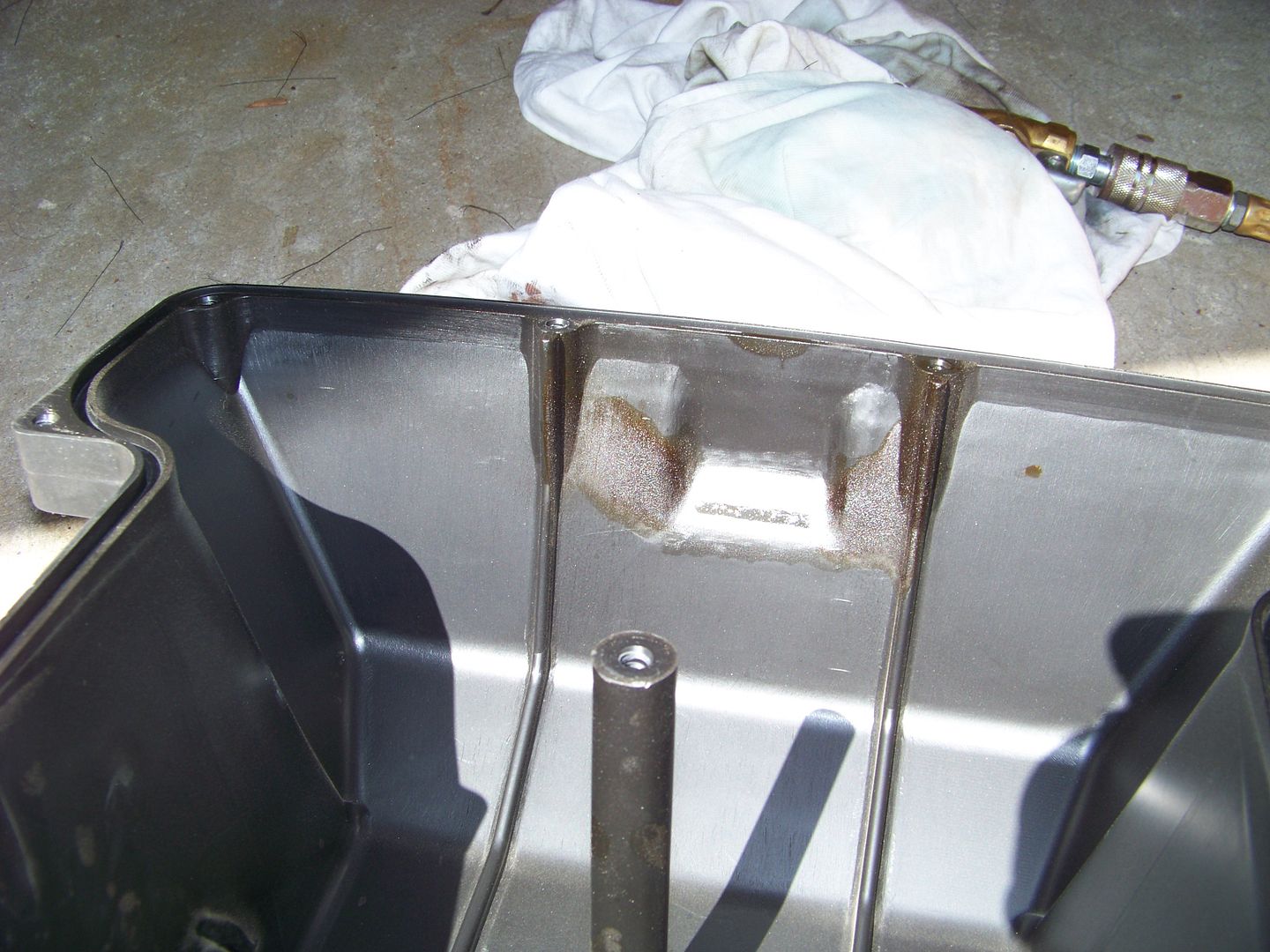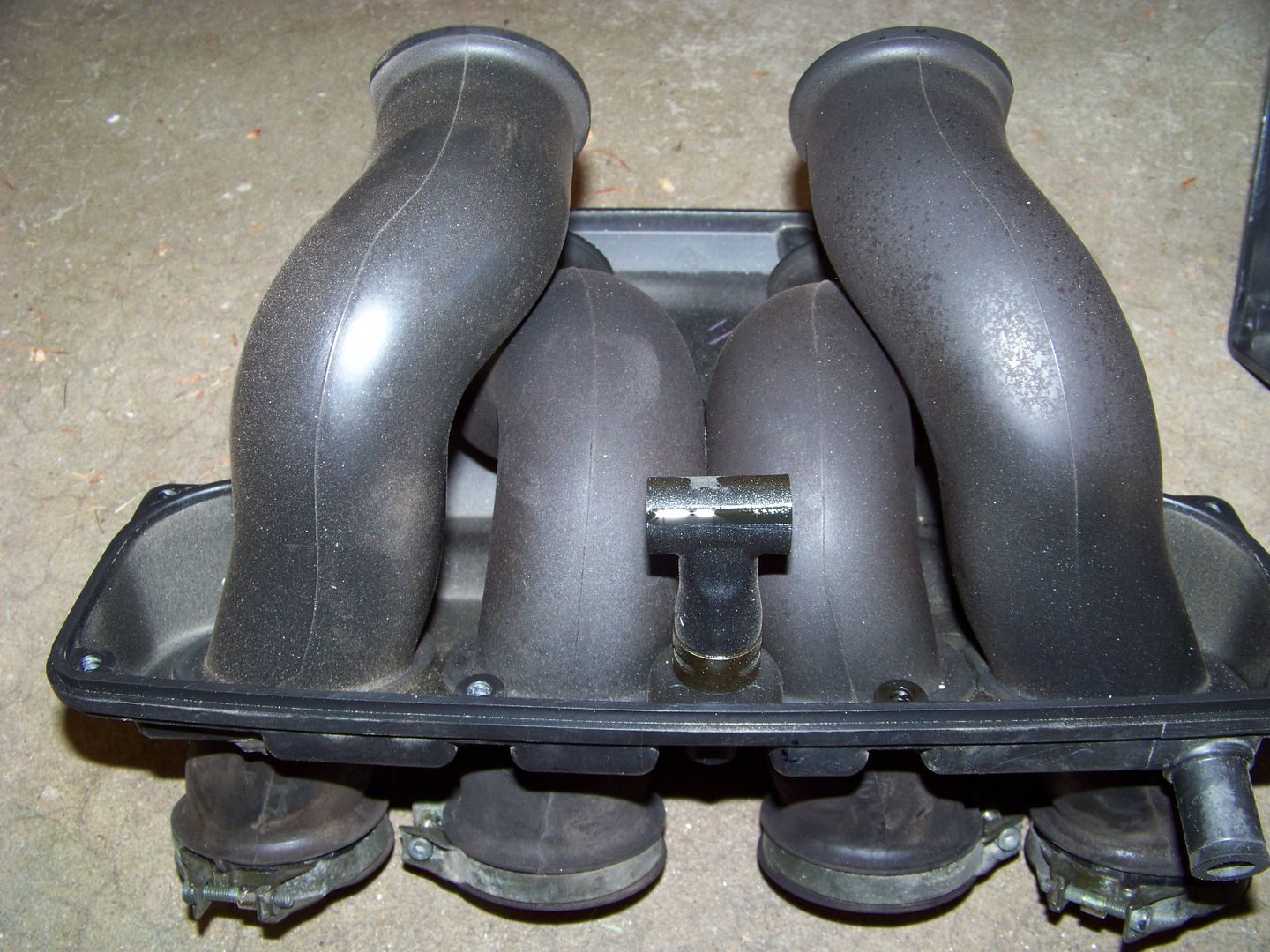How tedious and time consuming is it to disassemble the machine and gain access for the cleaning?
I've checked the valve clearances, etc. but I've never removed anything significant behind the engine. I did remove the fuel rail when I installed the cruise control cable.
I can see how a buildup of crud might affect the syncing adjustment of the throttle valves. Otherwise it's probably unimportant. I've not noticed any sticking of the throttle valves coming off idle as I turn the grip.
On one of my cars with a cable actuated throttle I have noticed a sticking of the throttle valve coming off idle. I cleaned the throttle body and valve and the sticking was gone.
I've checked the valve clearances, etc. but I've never removed anything significant behind the engine. I did remove the fuel rail when I installed the cruise control cable.
I can see how a buildup of crud might affect the syncing adjustment of the throttle valves. Otherwise it's probably unimportant. I've not noticed any sticking of the throttle valves coming off idle as I turn the grip.
On one of my cars with a cable actuated throttle I have noticed a sticking of the throttle valve coming off idle. I cleaned the throttle body and valve and the sticking was gone.




